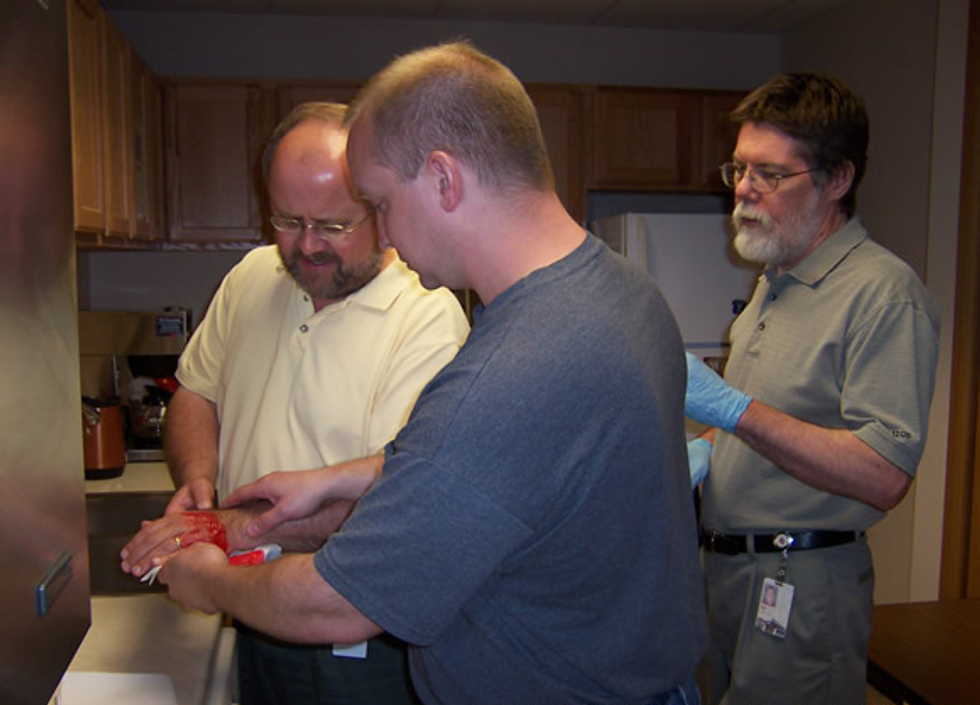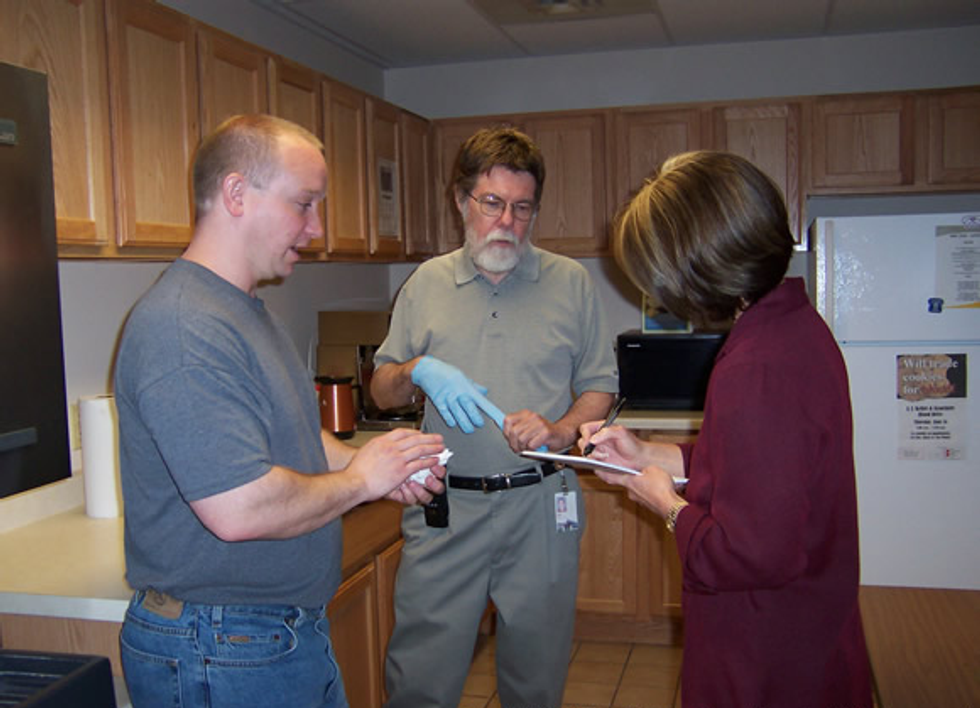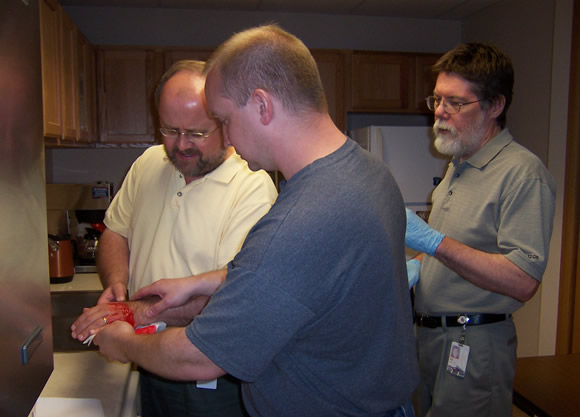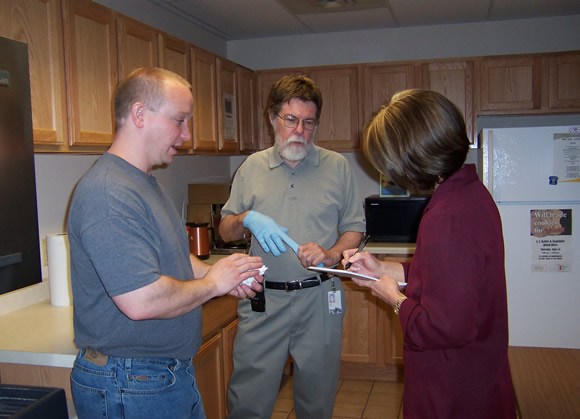Bloodborne Pathogens - Glove Use
Use this exercise to improve inspection skills and teach employees to recognize and prevent workplace hazards.


Bloodborne Pathogens - Glove Use Answers
One responder is not wearing gloves. Gloves shall be worn when the employee may have hand contact with blood, other potentially infectious materials, and non-intact skin. Although one employee is not wearing gloves, it is possible that he is not a designated responder, and therefore does not have “occupational exposure” as defined in 1910.1030(b).
Related information:
- ez Explanations®: Bloodborne Pathogens
- 1910.1030(d)(3) — Personal protective equipment
- 1910.1030(d)(3)(ix)
2) Designated responders must be trained. All employees with occupational exposure must participate in a bloodborne pathogens training program which must be provided at no cost to the employee and during working hours. Although a Good Samaritan responder is not covered by the regulation, designated responders must have training. As a best practice, inform all employees about the basics of bloodborne pathogens, and tell non-designated employees to contact a designated employee if they observe a medical emergency.
Related information:
- 1910.1030(g)(2) — Information and training
- Letter of Interpretation - 12/4/1992 — Applicability of Bloodborne Pathogens Standard to emergency responders, decontamination, housekeeping, and good Samaritan acts.
- Letter of Interpretation - 8/28/1992 — Bloodborne pathogen standard’s applicability to non-health care industries
3) Treatment is being provided in a kitchen area. Do not contaminate food areas with blood or other potentially infectious materials. Provide first aid treatment away from food preparation and eating areas.
Related information:
- 1910.1030(d)(2)(x) Food and drink shall not be kept in refrigerators, freezers, shelves, cabinets or on countertops or benchtops where blood or other potentially infectious materials are present.
- Letter of Interpretation - 4/21/1992 — Eating and drinking in area where potentially infectious material exists
4) Improper glove removal. The employee’s method of removing gloves provides risk of indirect contact with bloodbone pathogens. The other employee appears to have washed his hands. In addition, the area should be cleaned and disinfected. However, at least an indicent investigation was started immediately.
Related information:
- 1910.1030(d)(2)(v) Employers shall ensure that employees wash their hands immediately or as soon as feasible after removal of gloves or other personal protective equipment.
- 1910.1030(d)(4)(ii) All equipment and environmental and working surfaces shall be cleaned and decontaminated after contact with blood or other potentially infectious materials.
- Letter of Interpretation - 2/1/1993 — Most frequently asked questions concerning the bloodborne pathogens standard
5) The employer must comply with follow-up procedures. The employer shall make available the hepatitis B vaccine and vaccination series to all employees who have occupational exposure, and post-exposure evaluation and follow-up to all employees with occupational exposure who have had an exposure incident. Following a report of an exposure incident, the employer shall make immediately available to the exposed employee a confidential medical evaluation and follow-up.
Related information:
- 1910.1030(f) Hepatitis B vaccination and post-exposure evaluation and follow-up
- 1910.1030(f)(3) Post-exposure Evaluation and Follow-up
- Letter of Interpretation - 10/29/1999 — Employers must ensure that post-exposure follow-up procedures are provided
6) The employer may want to review the exposure control plan. Each employer having an employee(s) with occupational exposure shall establish a written Exposure Control Plan designed to eliminate or minimize employee exposure.
Related information:
- 1910.1030(c)(1) Exposure Control Plan
- ez Explanations®: Bloodborne Pathogens
If you see other things wrong in these pictures (please provide exercise title in comments) or have ideas for new pictures, please Expert Help.


